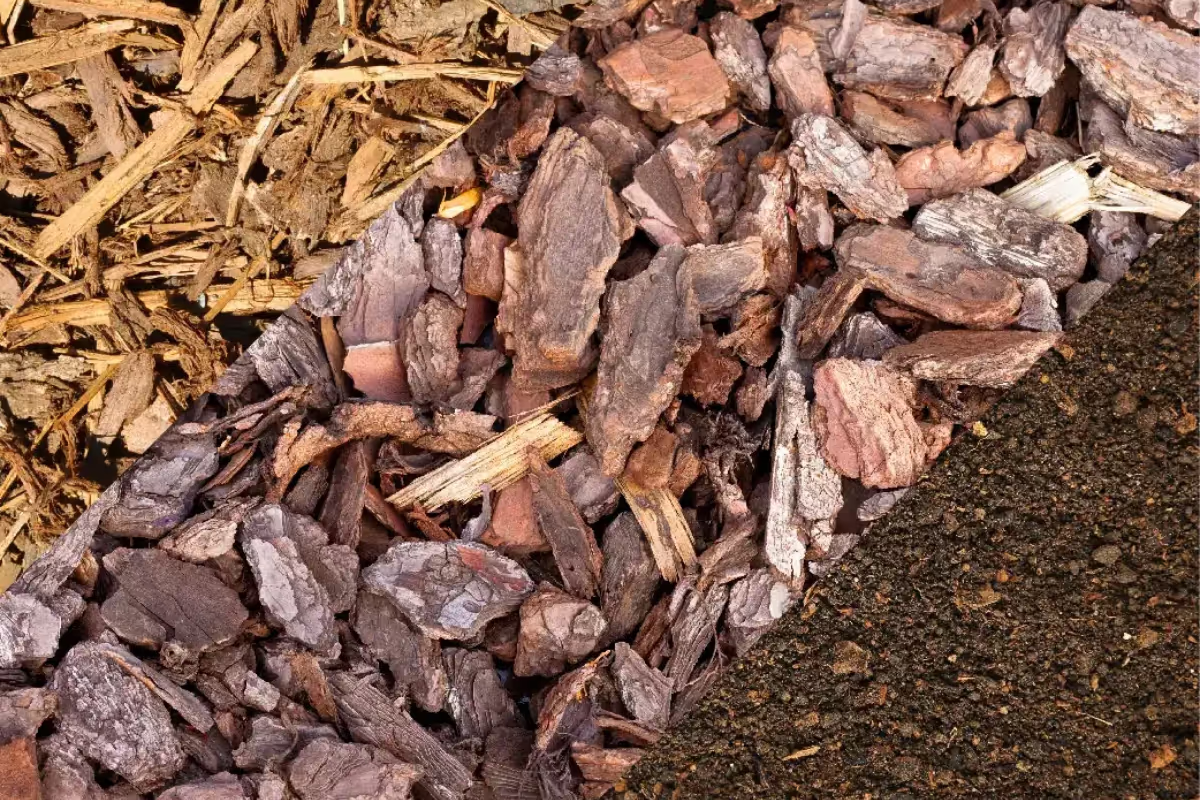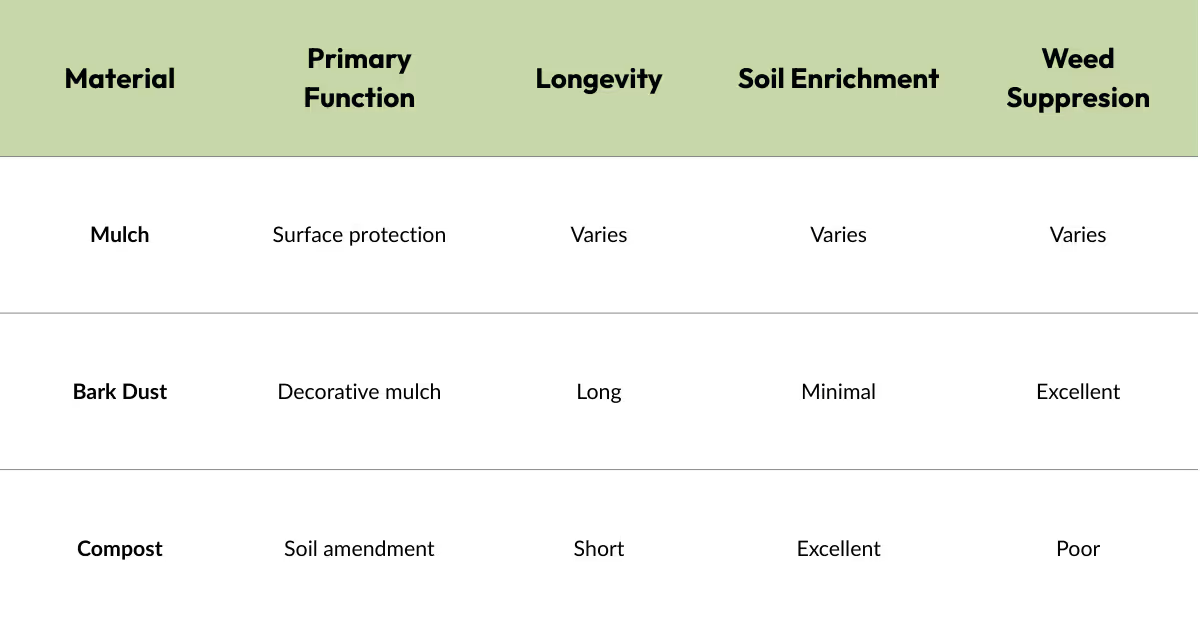

Whether you're maintaining a backyard garden, reworking a flower bed, or just trying to keep weeds down in your front yard, you've probably come across mulch, bark dust, and compost. These materials are often used interchangeably, but they’re not the same—and using the right one in the right place can make a big difference in the health and appearance of your landscape.
Here's what you need to know.
Mulch is a broad term for any material spread over the surface of the soil to retain moisture, suppress weeds, regulate temperature, and improve visual appeal. It can be organic (wood chips, straw, leaves) or inorganic (rubber, gravel).
Uses:
Best for: Flower beds, around trees and shrubs, and pathways where you want a clean look and long-term ground cover.
Bark dust is a specific type of organic mulch made from finely shredded or ground bark—usually from fir or hemlock trees. It’s valued for its smooth, uniform texture and deep color, making it popular for decorative landscaping.
Uses:
Best for: High-visibility areas where appearance matters, like front yards, commercial properties, or decorative beds.
Note: Bark dust is slower to break down than other mulches, so it lasts longer but doesn’t enrich the soil much on its own.
Compost is decomposed organic matter—kitchen scraps, yard waste, leaves, and manure—that’s broken down into a rich, crumbly soil amendment. It’s packed with nutrients and teeming with beneficial microbes.
Uses:
Best for: Mixing into garden beds before planting, topdressing lawns or vegetable gardens, and rejuvenating depleted soil.
Important distinction: Compost is not mulch. While you can use it as a top layer, it breaks down quickly and can encourage weed growth if not covered.

Each of these materials plays a different role in a thriving landscape. Think of compost as food for your soil, mulch as its blanket, and bark dust as the stylish coat you put on top. Use them wisely, and your plants—and your property—will thank you.